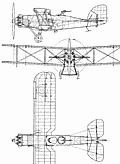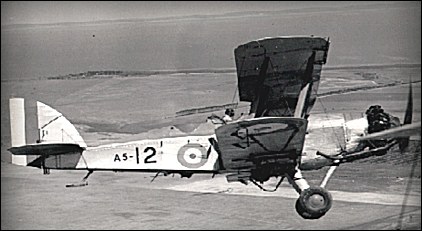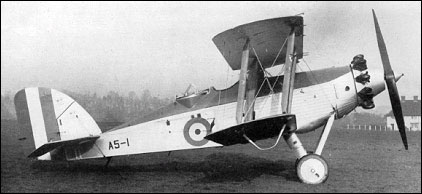|
| The Wapiti was a two-seat general-purpose biplane incorporating in its design several de Havilland D.H.9A component parts as requested by the Air Ministry. The prototype first flew in March 1927 and the initial order for 25 production Mk I included one specially modified aircraft with a more luxurious rear cockpit for the Prince of Wales to fly in.
Mk I were powered by 313kW Bristol Jupiter VI engines, but subsequent Mk II and Mk IIA had 343kW Jupiter VI and 391.2kW Jupiter VIIIF or similar engines respectively. Small numbers of lengthened Wapiti V and unarmed Mk VI trainers brought total production for the RAF to 501; while the type was also adopted by Australia, South Africa (also built under licence), Canada, India and China.
| MODEL | "Wapiti" Mk IIA |
| ENGINE | 1 x Bristol Jupiter VIII, 358kW |
| WEIGHTS |
| Take-off weight | 2449 kg | 5399 lb |
| Empty weight | 1728 kg | 3810 lb |
| DIMENSIONS |
| Wingspan | 14.15 m | 46 ft 5 in |
| Length | 9.65 m | 32 ft 8 in |
| Height | 3.61 m | 12 ft 10 in |
| Wing area | 43.48 m2 | 468.01 sq ft |
| PERFORMANCE |
| Max. speed | 225 km/h | 140 mph |
| Ceiling | 6280 m | 20600 ft |
| Range | 853 km | 530 miles |
| ARMAMENT | 2 x 7.7mm machine-guns, 263kg of bombs |
 | A three-view drawing (791 x 1078) |
| richard pratt, e-mail, 10.12.2012 13:49 The Wapiti was used for the first ever flight over Mt Everest.It was an excellent aircraft, and the RAF had 512, and other customers another 500. reply | | juankuan, 20.06.2011 13:07 while the type was also adopted by Australia, South Africa (also built under licence), Canada, India and China. reply |
|
Do you have any comments?
|
| 
COMPANY
PROFILE
All the World's Rotorcraft
|








